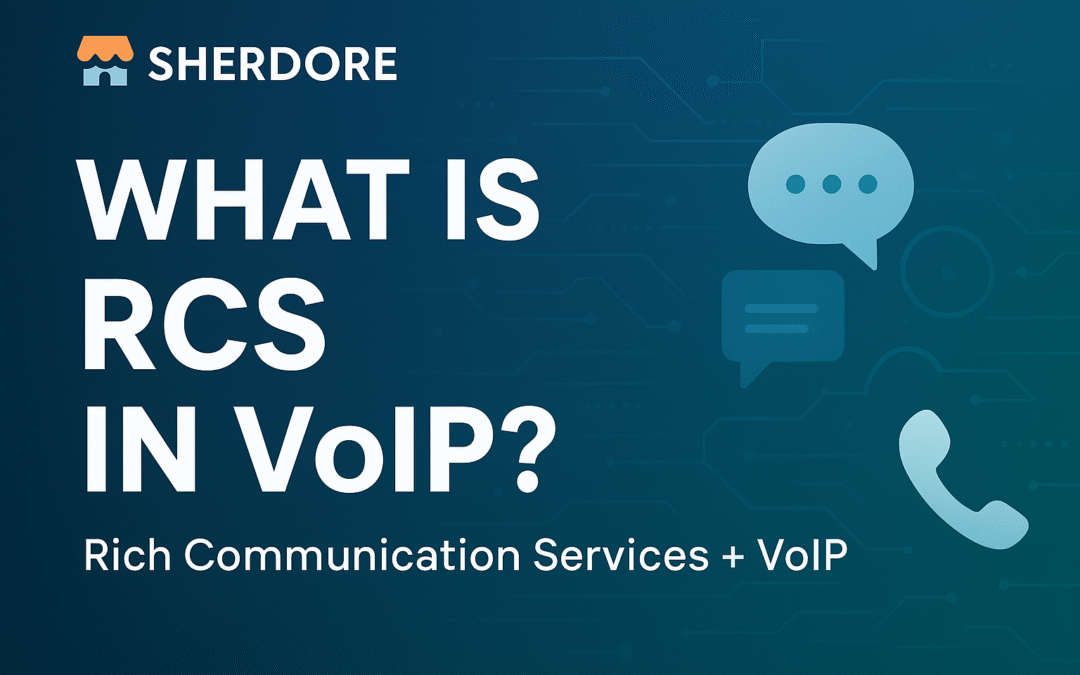businesses and consumers demand more than just voice calls in digital communication landscape. They expect high-quality interactions that include voice, video, and instant messaging with rich features. Two technologies that meet these demands are VoIP (Voice over Internet Protocol) and RCS (Rich Communication Services). While they serve different core functions, they complement each other to deliver a complete communication experience. This article explores what RCS is, how it fits into the VoIP ecosystem, and why their combination is shaping the future of communication.
Understanding VoIP
Voice over Internet Protocol (VoIP) is a technology that enables users to make voice and video calls over the internet, bypassing traditional phone lines. It converts audio signals into digital data packets and transmits them over IP networks. Popular applications like Zoom, Skype, WhatsApp, and even enterprise-level solutions like 3CX and Asterisk rely on VoIP technology.
Key features of VoIP include:
-
Voice and video calls
-
Voicemail and call forwarding
-
Conference calling
-
Integration with CRM and other tools
VoIP is cost-effective, scalable, and flexible—ideal for both personal and business use.
What is RCS?
Rich Communication Services (RCS) is a protocol designed to upgrade traditional SMS messaging. Developed by the GSM Association, RCS brings modern messaging features to the native messaging apps on smartphones, especially Android devices. It’s often seen as Google’s answer to Apple’s iMessage.
Key features of RCS include:
-
Typing indicators (see when someone is typing)
-
Read receipts (know when a message is read)
-
High-resolution media sharing
-
Location sharing
-
Group chats
-
App-like interactive features, such as suggested replies or embedded links
Unlike SMS, which sends messages through cellular channels, RCS requires a data connection—either Wi-Fi or mobile data—making it function similarly to other internet-based messaging services.
How RCS Relates to VoIP
While VoIP focuses on voice and video transmission, RCS handles enriched text messaging. They do not replace each other but work in parallel to deliver a full spectrum of communication capabilities.
Here’s how RCS complements VoIP:
-
Unified Communication Platforms: Many businesses use platforms that integrate voice calls, video meetings, and messaging. Adding RCS capabilities provides a richer messaging experience directly from the same platform.
-
Customer Engagement: Companies can use VoIP for voice support and RCS for sending appointment reminders, promotions, or customer service messages—with better engagement than SMS.
-
Mobile Network Operators (MNOs): Telecom providers are gradually integrating RCS alongside VoIP in their native calling and messaging services, offering users a seamless communication package.
RCS + VoIP in Business Use
For businesses, combining VoIP and RCS creates opportunities for:
-
Improved customer support: Provide voice support via VoIP and follow up with interactive messages using RCS.
-
Marketing campaigns: Send multimedia messages that are visually appealing and track user engagement—something not possible with plain SMS.
-
Automation & Bots: Implement RCS chatbots that guide users through tasks while offering call options via VoIP.
Limitations and Considerations
Despite its promise, RCS still faces some challenges:
-
Limited iOS support: Apple devices do not support RCS, relying instead on iMessage, which limits RCS to Android users.
-
Carrier support: RCS adoption depends on mobile carriers and device manufacturers, though adoption is growing.
-
Security concerns: RCS doesn’t offer end-to-end encryption by default, unlike some third-party apps.
On the VoIP side, users must consider bandwidth, quality of service, and regulatory compliance (e.g., for call recording or emergency calling).
The Future: Converged Communications
As communication becomes more integrated, the lines between VoIP and messaging services blur. Platforms are evolving into UCaaS (Unified Communications as a Service) solutions that offer voice, video, text, email, and collaboration in one system. In this context, RCS and VoIP are not standalone technologies—they are complementary components of a richer, more connected user experience.
Conclusion
RCS in VoIP doesn’t mean that RCS is a voice protocol—it means that RCS can enhance VoIP platforms by adding modern messaging features. Together, they form a powerful duo for businesses looking to offer seamless, rich, and interactive communication. Whether you’re a telecom provider, app developer, or business owner, integrating RCS and VoIP can help you meet evolving communication demands and improve customer engagement in a competitive digital landscape.









